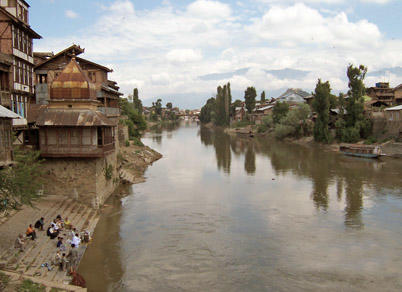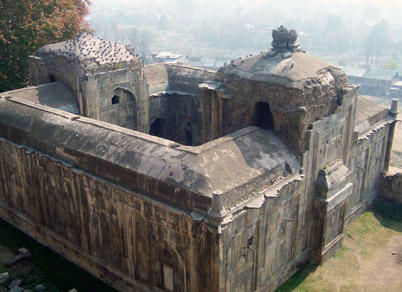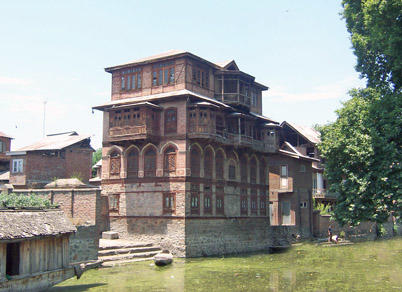Srinagar Heritage Zone
2008 World Monuments Watch
Founded between the Jhelum River and Dal Lake in the mid-third century B.C., the city of Srinagar reached its apogee in the fifteenth and sixteenth centuries. The city's most famous monuments, including the Shalimar and Nishat Gardens, were built after the Mughal emperor Akbar captured the province of Kashmir in the sixteenth century. During the eighteenth- and nineteenth-century British occupation of Srinagar, colonial-style colleges, hospitals, and courts were constructed. In the downtown area of the city are less well-known residences, mosques, temples, hammams, and bazaars constructed in the local vernacular of timber and masonry architecture. Together, these buildings represent an unusually intact pre-modern urban environment. Demand for land in historic areas of Srinagar is raising the commercial value of many residential buildings, which are being sold, demolished, and converted into modern dwellings or shopping malls. Unplanned and unregulated development schemes and a lack of basic amenities make Srinagar perhaps the most threatened site in India. Several hundred buildings in downtown Srinagar have been identified for protection as part of a cultural resource mapping project carried out by the Indian National Trust for Art & Cultural Heritage (INTACH). Ongoing regional conflict over control of Kashmir continues to pose a threat to the city and its inhabitants. The effort to protect the historic areas of Srinagar is part of a new emphasis in the region on heritage tourism and the local arts and crafts industry, which already forms the backbone of the state's economy. Watch Listing may lend timely support to these efforts, and help increase public awareness of this important historic city.



